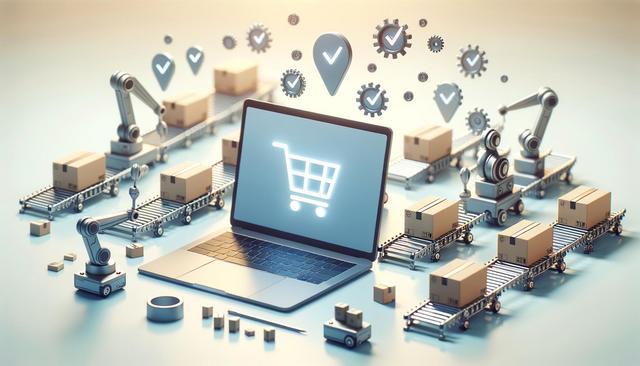Understanding What Shopify Automated Stores Are
Shopify automated stores are eCommerce websites built on the Shopify platform that utilize automation tools and integrations to handle repetitive business tasks. This includes inventory updates, order processing, customer communication, and marketing activities. By automating these processes, store owners can focus more on strategic activities such as product development or growth planning. Automation is achieved through apps and third-party services that integrate directly with Shopify, helping streamline the store’s workflow from start to finish.
These stores are particularly appealing to entrepreneurs looking to launch an online business with minimal daily involvement. By using automation, business owners can reduce the time spent on routine operations, improve response times, and potentially scale faster. It’s a model that supports both beginners and experienced sellers who want to simplify their operations while maintaining control over key decisions.
Key Features and Benefits of Automation
Automated Shopify stores come with a variety of features that help business owners manage tasks more efficiently. These features are often tailored to different business needs and can be adjusted as the store evolves. Common automation features include:
- Automated order fulfillment through dropshipping suppliers
- Email marketing sequences triggered by customer behavior
- Inventory management that updates stock levels in real time
- Customer support chatbots that handle basic inquiries
- Sales reporting and analytics dashboards for performance tracking
The main advantage of automation is time-saving. Store owners can reduce the number of manual tasks, which not only saves time but also decreases the chance of human error. In addition, automation can enhance customer satisfaction by providing faster service and more accurate order handling. With tools that monitor and respond to customer behavior, businesses can also improve their marketing efforts and increase conversion rates.
How to Set Up a Shopify Automated Store
Setting up an automated Shopify store involves a few essential steps, beginning with choosing a niche and selecting the appropriate products. Once the store is created using Shopify’s interface, automation tools can be added to handle various tasks. Here is a general step-by-step guide:
- Create a Shopify account and choose a theme suitable for your niche
- Add products manually or connect with a supplier for automated product import
- Integrate fulfillment services that support automation, such as print-on-demand or dropshipping platforms
- Install marketing and customer service apps to automate emails, chat, and support
- Set up analytics tools to monitor store performance and customer behavior
The process doesn’t require advanced technical skills, though some familiarity with eCommerce platforms can be helpful. Shopify’s app store offers a wide range of tools, from inventory management to automated email campaigns, that make it easier to run an online business efficiently.
Challenges to Consider With Automation
While automation can significantly simplify store management, there are some challenges that store owners should be mindful of. One of the primary concerns is over-reliance on automation, which can lead to a lack of personal engagement with customers. Automated messages, for example, may not always capture the tone or context needed for effective communication.
Another consideration is the cost. Many automation tools and apps come with monthly fees, and these can add up over time. Store owners should evaluate the return on investment for each tool and ensure they are not spending more than they are gaining from the automation. Additionally, some tools may not integrate seamlessly, leading to issues with data consistency or workflow disruptions.
It’s also important to regularly review and update automated processes. As a store grows, its needs may change, and automation workflows might need adjustments to remain effective. Testing and tweaking your systems ensures that automation continues to serve the business goals rather than becoming a limitation.
Who Can Benefit Most From Shopify Automated Stores?
Shopify automated stores are suitable for a wide range of users, from aspiring entrepreneurs to experienced business owners looking to streamline operations. They are particularly beneficial for:
- Individuals seeking passive income opportunities through dropshipping or print-on-demand models
- Small business owners aiming to scale without expanding their workforce
- Freelancers or digital nomads who need location-independent income sources
- Marketers and product creators who want to focus on growth rather than operations
These stores can also be valuable for those looking to test business ideas with minimal upfront investment. With automation in place, it’s possible to launch and manage a store without needing to be involved in every detail of daily operations. This flexibility allows entrepreneurs to allocate their time and resources more strategically, increasing the chances of long-term success.
Final Thoughts on Leveraging Automation in eCommerce
For those exploring the eCommerce space, Shopify automated stores offer a compelling option to build and manage an online business with greater efficiency. By leveraging automation tools, store owners can reduce operational burdens while maintaining a consistent experience for customers. While automation isn’t a substitute for strategic thinking or customer engagement, it serves as a powerful support system for business growth.
Entrepreneurs considering this path should weigh both the advantages and limitations, ensuring that their store structure aligns with their goals. With thoughtful planning and the right tools, Shopify automated stores can form a solid foundation for a scalable and manageable online business.




Leave a Reply